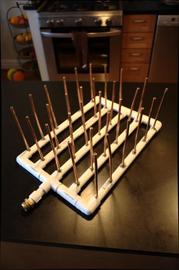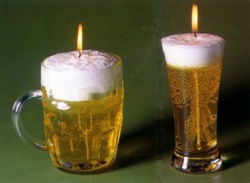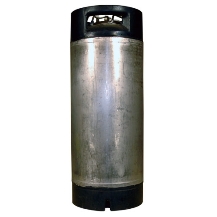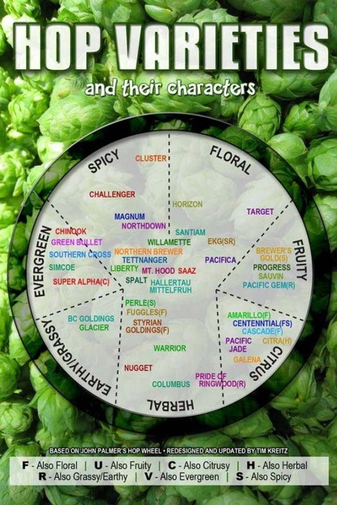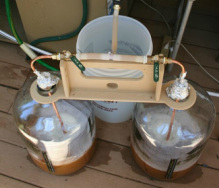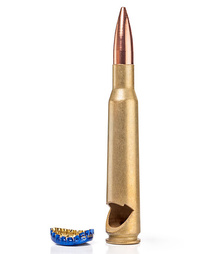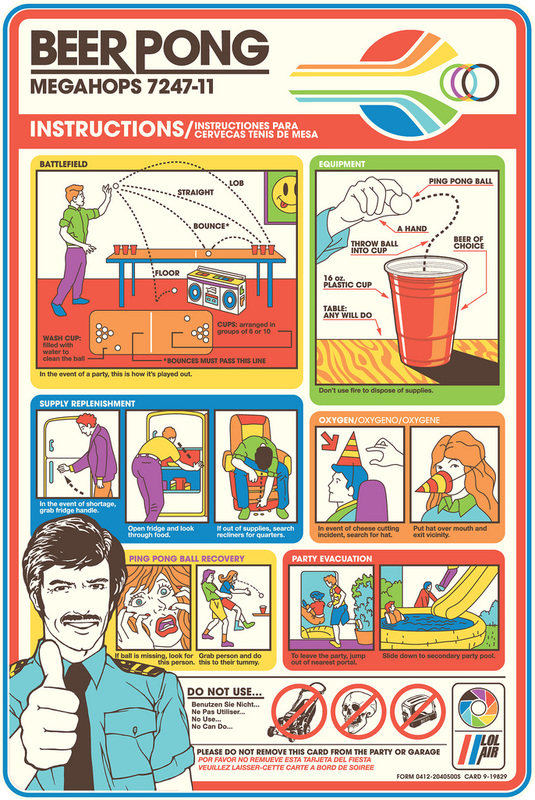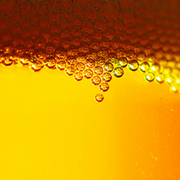
The amount of CO2 in beer is measured by volumes and can vary slightly depending on the style. Around 2.5 volumes is pretty typical for most styles in the United States. Here's a chart that correlates beer temperature and PSI to help us out. You can see by the graphic that setting the regulator to 10 PSI with the beer temperature at 38°F will put it at 2.38 volumes.
The next term to understand is equilibrium (sorry for the geek speak). This represents the minimum amount of pressure that is needed to maintain the gas disolved in the beer. In our example above, it usually takes about a week until the beer has reached this point. If the beer is warm, it will take longer for the CO2 to disolve at the same PSI.
With these things in mind, there are two typical ways that homebrewers carbonate using CO2.
Slow "Forced" Carbonating
Here are a few common scenarios:
- 65°F (warm) at 27 PSI for about 10 days to hit 2.4 volumes.
- 37°F (cold) at 10 PSI for about 10 days to hit 2.4 volumes.
- 37°F (cold) at 35 PSI for 2-3 days to hit 2.4 volumes.
This last example is our preferred method of carbing. We use a small 5lb tank that easily fits in the keezer with the kegs. This is the fastest "non-shake" method of carbonating that we've found and it's nice because this extra time puts a little more age on the beer.
Note that all connections must have tightened hose clamps or the tank will be empty in no time!
Fast "Forced" Carbonating
Some people shake with the gas line facing up (liquid side toward the floor) for fear of getting beer in the gas line. They typically set the regulator to 25-30 psi, connect the gas line to the cold keg, lay it flat to create the most surface area, then roll and shake the keg gently for about 20 minutes. Allow the keg to sit for a while and bleed off most of the gas before doing a test pour. Repeat if necessary.
Others find that setting the PSI to 40-50 prevents any backflow and the beer is shaken with the gas line at the bottom. This method has the benefit of listening for bubbles as CO2 enters the beer. The idea is to lower the pressure by 2-5 PSI each time the bubbles stop, then continue rocking the keg so the bubbles start again as the gas present goes into solution. Once the PSI on the regulator is around 20, the target pressure desired should be pretty close and near a good level of carbonation for serving.
I'm over carbonated... what happened??!!
Disconnect the gas and pull the pressure release value until the hissing stops. CO2 will come out of solution to re-pressurize the head space and be removed from the beer. Do this again every few hours until the desired volume is reached.

